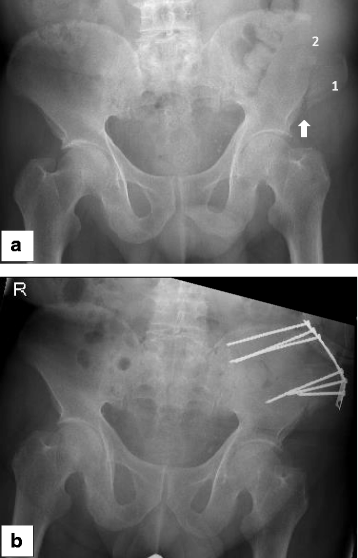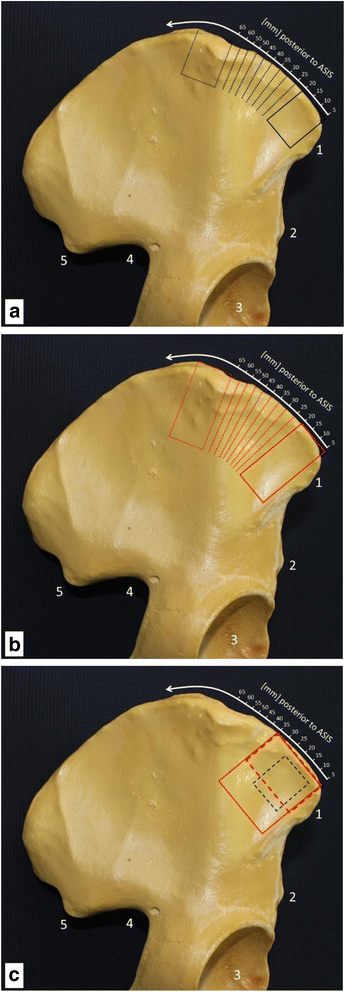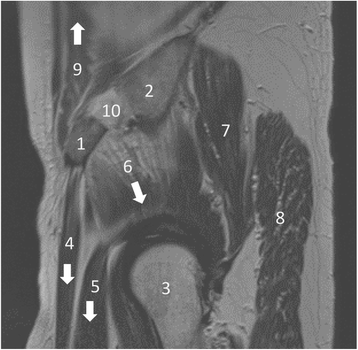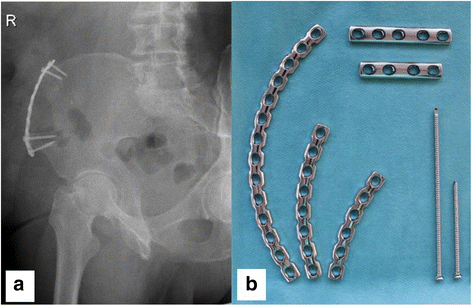Biomechanical analysis of iliac crest loading following cortico-cancellous bone harvesting
- PMID: 29739435
- PMCID: PMC5941784
- DOI: 10.1186/s13018-018-0822-1
Biomechanical analysis of iliac crest loading following cortico-cancellous bone harvesting
Abstract
Background: Iliac crest bone harvesting is a frequently performed surgical procedure widely used to treat bone defects. The objective of this study is to assess the biomechanical quantities related to risk for pelvic fracture after harvesting an autologous bone graft at the anterior iliac crest.
Methods: Finite element models with a simulated harvest site (sized 15 × 20 mm, 15 × 35 mm, 30 × 20 mm and 30 × 35 mm) in the iliac wing are created. The relevant loading case is when the ipsilateral leg is lifted off the ground. Musculoskeletal analysis is utilized to compute the muscle and joint forces involved in this motion. These forces are used as boundary conditions for the finite element analyses. Bone tissue stress is analyzed.
Results: Critical stress peaks are located between the anterior superior iliac spine (ASIS) and the anterior edge of the harvest site. Irrespective of the graft size, the iliac wing does not show any significant stress peaks with the harvest site being 20 to 25 mm posterior to the ASIS. The harvest area itself inhibits the distribution of the forces applied on the ASIS to extend to the posterior iliac wing. This leads to a lack of stress posterior to the harvest site. A balanced stress distribution with no stress peaks appears when the bone graft is taken below the iliac crest.
Conclusion: A harvest site located at least 20 to 25 mm posterior to the ASIS should be preferred to minimize the risk of iliac fatigue fracture.
Keywords: ASIS; Autologous bone graft; Biomechanical investigation; Bone harvesting; FEA; Fatigue fracture; Iliac crest; Pelvis.
Conflict of interest statement
Ethics approval and consent to participate
Due to the nature of the study based on a CT scan that was performed for another reason than the finite element analysis (FEA) without need for any further individual data, the “Independent Ethics Committee of the Faculty of Medicine” at the University Regensburg Medical Centre confirmed that an ethics opinion in accordance with the 1964 Helsinki Declaration is not necessary (institutional review board number 18-180-0000).
Competing interests
The authors declare that they have no competing interests.
Publisher’s Note
Springer Nature remains neutral with regard to jurisdictional claims in published maps and institutional affiliations.
Figures






References
-
- Hu R, Hearn T, Yang J. Bone graft harvest site as a determinant of iliac crest strength. Clin Orthop Relat Res. 1995;310:252–256. - PubMed
MeSH terms
LinkOut - more resources
Full Text Sources
Other Literature Sources

